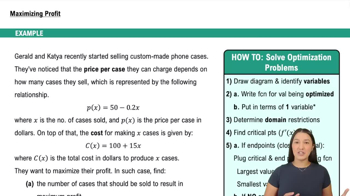Right circular cylinder The total surface area S of a right circular cylinder is related to the base radius r and height h by the equation S = 2πr² + 2πrh.
c. How is dS/dt related to dr/dt and dh/dt if neither r nor h is constant?
 Verified step by step guidance
Verified step by step guidance Verified video answer for a similar problem:
Verified video answer for a similar problem:



 4:16m
4:16mMaster Intro To Related Rates with a bite sized video explanation from Patrick
Start learning